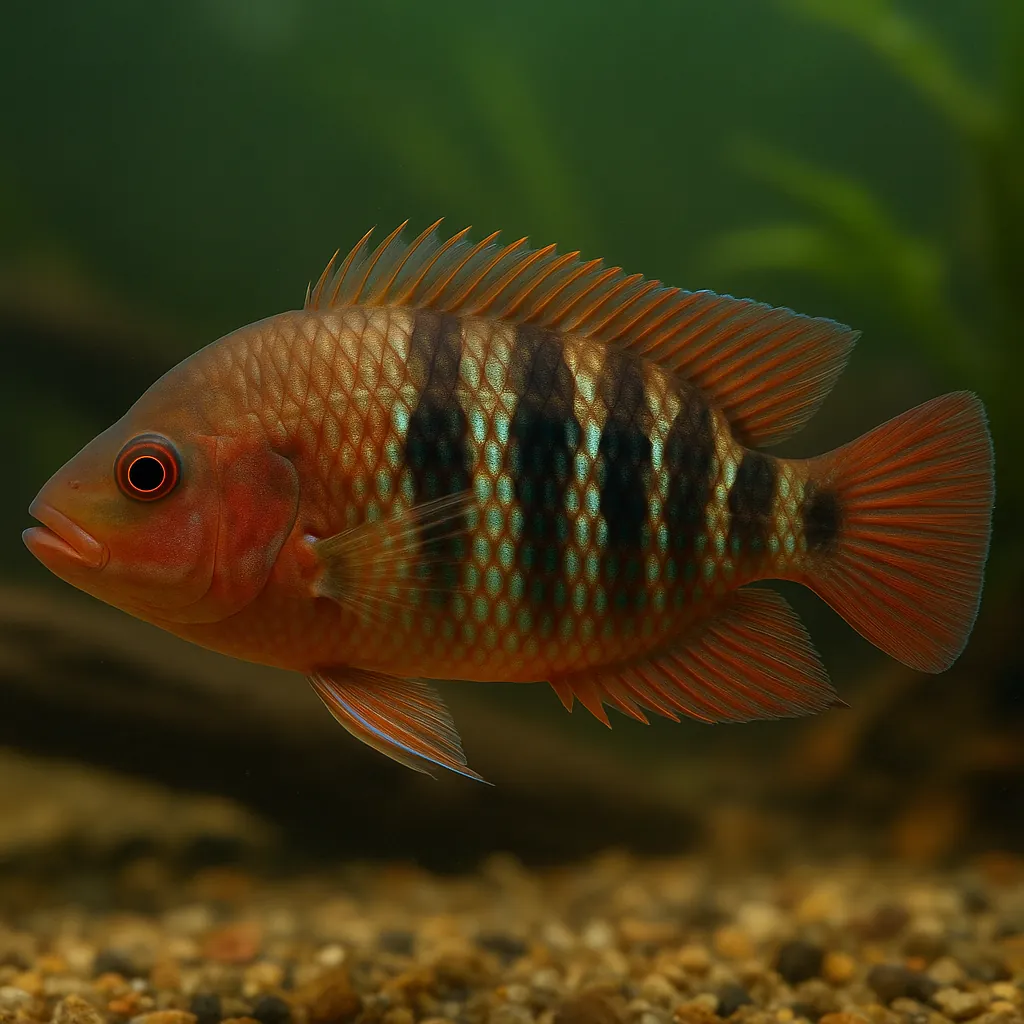
Mayan cichlid
Introduction
The Mayan cichlid (Mayaheros urophthalmus), also known as the Mexican mojarra, is a vibrant and hardy fish native to Central America. Its striking coloration and adaptability make it a popular choice among aquarists. However, due to its territorial nature and specific care requirements, it is best suited for hobbyists with some experience in fishkeeping.
Care and Environment
Providing optimal care for the Mayan cichlid involves attention to tank size, water parameters, diet, and tank setup.
What is the minimum tank size for a Mayan cichlid?
A single Mayan cichlid requires a minimum tank size of 208 liters (55 gallons) to accommodate its active nature and territorial behavior. For a pair or community setup, a larger tank of at least 400 liters (105 gallons) is recommended to provide ample space and reduce aggression.
What are the ideal water parameters for Mayan cichlids?
Mayan cichlids thrive in water temperatures between 20°C and 30°C, with a pH range of 7.0 to 8.0, and water hardness up to 20°H. They are euryhaline, meaning they can tolerate both freshwater and brackish conditions, with salinity levels up to 40 ppt. Regular monitoring and maintenance of these parameters are essential for their health.
How should the tank be set up for Mayan cichlids?
The tank should include stable rocks, driftwood, and hiding spots to mimic their natural habitat. While they are known to dig and may uproot plants, using hardy, well-rooted species or floating plants can provide additional cover. A robust filtration system is necessary to handle the bioload and maintain water quality.
What is the recommended diet for Mayan cichlids?
Mayan cichlids are omnivorous with a preference for animal-based foods. In captivity, they should be fed a varied diet consisting of high-quality cichlid pellets, supplemented with live or frozen foods such as shrimp, mussels, and insects. Including some vegetable matter, like blanched spinach, can also be beneficial. Feeding them once or twice daily, with portions they can consume within a few minutes, helps prevent overfeeding and maintains water quality.
Origin and Habitat
Native to the Atlantic drainages of Central America, the Mayan cichlid's range extends from southeastern Mexico through Belize, Guatemala, Honduras, and Nicaragua. They inhabit a variety of environments, including rivers, lakes, marshes, swamps, and coastal lagoons. These habitats are characterized by slow-moving or stagnant waters with abundant vegetation and soft substrates. Their adaptability allows them to thrive in both freshwater and brackish conditions, often found in mangrove swamps and estuaries.
Temperament and Compatibility
Mayan cichlids are known for their territorial and aggressive behavior, especially during breeding periods. They are not shoaling fish and prefer to establish and defend their own territories.
Can Mayan cichlids be kept with other fish?
Due to their aggressive nature, Mayan cichlids are best kept with similarly sized and equally robust fish that can hold their own. Suitable tank mates include other large cichlids like Oscars, Jack Dempseys, and Green Terrors. It's crucial to provide a spacious tank with plenty of hiding spots to reduce territorial disputes.
How can aggression be managed in a community tank?
To manage aggression, ensure the tank is large enough to provide each fish with its own territory. Incorporating visual barriers like rocks and driftwood can help break lines of sight and reduce confrontations. Monitoring the fish's behavior and being prepared to separate individuals if aggression becomes problematic is essential.
Interesting Facts
The Mayan cichlid exhibits several fascinating traits that intrigue aquarists.
How adaptable are Mayan cichlids to different environments?
Mayan cichlids are highly adaptable, capable of surviving in a wide range of salinities from freshwater to full marine conditions. They can also tolerate varying temperatures and oxygen levels, making them resilient in diverse habitats.
What is unique about their breeding behavior?
They are monogamous and exhibit strong parental care. During breeding, they become highly territorial and aggressive, guarding their eggs and fry diligently. This protective behavior ensures higher survival rates for their offspring.
Are Mayan cichlids known by any other names?
Yes, they are also commonly referred to as the Mexican mojarra, reflecting their native range and local naming conventions.
Sources
All information in this article has been gathered from the following reputable sources:
Overview
Recommended Tank Size 105.7 Gallons (for pairs or community setups) |
Minimum Group Size 1 |
Minimum Tank Volume 54.9 Gallons |
Maximum Adult Length 15.7 inches |
Average Adult Length 11.8 inches |
Shoaling (6+ required) No |
Preferred Water Type Freshwater and brackish |
Temperature Range (°C) 20–30 |
pH Range 7.0–8.0 |
Water Hardness (dGH) 20 |
Typical Lifespan (years) 4 years |